Sungju Hwang
Learning What to Remember: Long-term Episodic Memory Networks for Learning from Streaming Data
Dec 11, 2018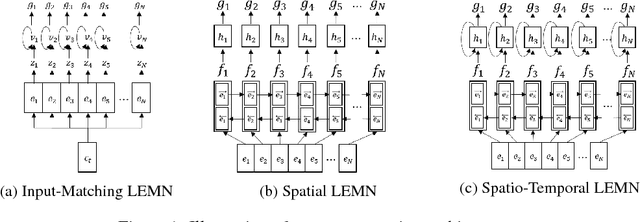


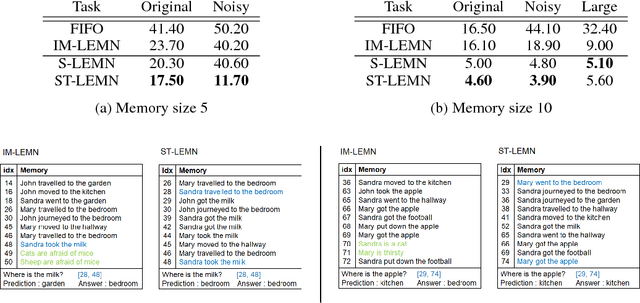
Abstract:Current generation of memory-augmented neural networks has limited scalability as they cannot efficiently process data that are too large to fit in the external memory storage. One example of this is lifelong learning scenario where the model receives unlimited length of data stream as an input which contains vast majority of uninformative entries. We tackle this problem by proposing a memory network fit for long-term lifelong learning scenario, which we refer to as Long-term Episodic Memory Networks (LEMN), that features a RNN-based retention agent that learns to replace less important memory entries based on the retention probability generated on each entry that is learned to identify data instances of generic importance relative to other memory entries, as well as its historical importance. Such learning of retention agent allows our long-term episodic memory network to retain memory entries of generic importance for a given task. We validate our model on a path-finding task as well as synthetic and real question answering tasks, on which our model achieves significant improvements over the memory augmented networks with rule-based memory scheduling as well as an RL-based baseline that does not consider relative or historical importance of the memory.
Learning to Propagate Labels: Transductive Propagation Network for Few-shot Learning
Oct 02, 2018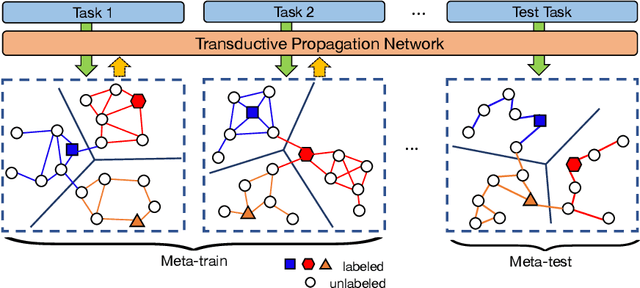
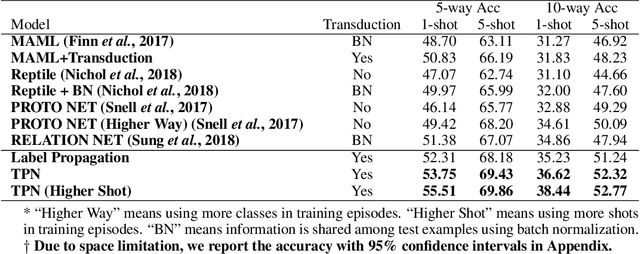

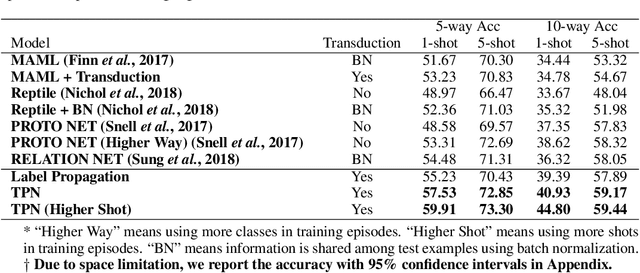
Abstract:The goal of few-shot learning is to learn a classifier that generalizes well even when trained with a limited number of training instances per class. The recently introduced meta-learning approaches tackle this problem by learning a generic classifier across a large number of multiclass classification tasks and generalizing the model to a new task. Yet, even with such meta-learning, the low-data problem in the novel classification task still remains. In this paper, we propose Transductive Propagation Network (TPN), a novel meta-learning framework for transductive inference that classifies the entire test set at once to alleviate the low-data problem. Specifically, we propose to learn to propagate labels from labeled instances to unlabeled test instances, by learning a graph construction module that exploits the manifold structure in the data. TPN jointly learns both the parameters of feature embedding and the graph construction in an end-to-end manner. We validate TPN on multiple benchmark datasets, on which it largely outperforms existing few-shot learning approaches and achieves the state-of-the-art results.
 Add to Chrome
Add to Chrome Add to Firefox
Add to Firefox Add to Edge
Add to Edge